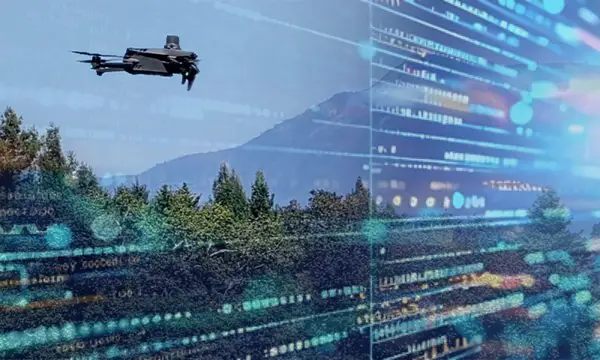- About
- Network
- Community
- Initiatives
- News
- Events
- Blog
- Publications

CENIC Recognizes UC San Diego’s ALERTCalifornia, CAL FIRE, and DigitalPath for Creating AI Tool for Wildfire Detection
UC San Diego’s ALERTCalifornia, in collaboration with the California Department of Forestry and Fire Protection (CAL FIRE) and industry partner DigitalPath have been selected to receive CENIC’s 2024 Innovations in Networking Award for Public Safety. The collaborative public-private partnership has been essential for building, training, and launching a new AI tool The CENIC Innovations in Networking Awards recognize exemplary people, projects, and organizations that leverage high-bandwidth networking.
ALERTCalifornia is led by the efforts of Neal Driscoll, Geosciences Research Division, Scripps Institution of Oceanography; Falko Kuester, Jacobs School of Engineering, UC San Diego; and Frank Vernon, Institute of Geophysics and Planetary Physics, Scripps Institution of Oceanography.
“ALERTCalifornia, CAL FIRE, and Digital Path are very proud to be the recipients of the 2024 CENIC award in recognition of network innovations for public safety. We have employed high-bandwidth networking to provide confirmation of ignition, actionable real-time data to quickly scale fire resources, help evacuations through enhanced situational awareness, and monitor fire behavior,” stated Neal Driscoll, ALERTCalifornia director and professor of geology and geophysics at Scripps Institution of Oceanography at UC San Diego. “These sensors are new tools in the toolbox and allow data to drive firefighting decisions, which saves lives, protects biohabitats, and infrastructure.”
The collaboratively created AI-powered fire detection tool has improved firefighting capabilities and response times, mitigates critical emergency staff fatigue, reduced false positives, and confirmed fire incidents in the incipient phase, enabling firefighters to combat fires before they grow. When the AI spots a potential fire on ALERTCalifornia’s network of more than 1,060 cameras, the system alerts firefighters and provides a percentage of certainty and estimated location for the incident. If the incident is vetted and confirmed by trained emergency staff, firefighters respond quickly to extinguish the fire.
“I have had the opportunity to engage with the precursors to ALERTCalifornia over the past decade or so, and it is truly remarkable what you’ve accomplished with your vision, commitment, and just plain old hard work and tenacity,” said Louis Fox, CENIC’s Chief Executive Officer. “The latest instantiation of this project is an inspiration.”
Networked Cameras, Software, and Expertise Building on Existing Infrastructure
In September 2023, CAL FIRE launched the AI-powered fire monitoring tool across all units, improving firefighting capabilities by using actionable, real-time data. The tool was also was listed as one of TIME’s Best Inventions in 2023.
The interplay between the various components in this system is extremely complex. ALERTCalifornia’s cameras, connected through UC San Diego’s NSF-funded High Performance Wireless Research and Education Network (HPWREN), are monitored by CAL FIRE first responders with thousands of total hours of firefighting experience among them, and their expertise is used to train the AI software created by Chico-based software company DigitalPath.
This training is necessary since many activities, especially in the rural and remote areas where such fires might start, can raise dust or smoke that might be taken for the initial stages of a destructive wildfire. Human familiarity with a given area and even of its industry and typical schedule of activities can be an important part of determining whether a plume of dust is caused by an active combine harvester, a controlled post-harvest burning of chaff, or an incipient wildfire. Even weather data can be factored into the AI’s response, and the US military has opted to contribute carefully selected drone data as well.
Responding Well Before the Nick of Time Thanks to AI
After being made available for use to all CAL FIRE command centers, it didn’t take long for the AI tool to prove its potential to save lives and property, alerting first responders to a nascent wildfire near Grass Valley, CA on September 11. The first 911 call was made a half hour after firefighters had already arrived on the scene, and they were able to keep the fire contained to only a quarter of an acre.
Another fire in the Cleveland National Forest was discovered at 3am during the program’s pilot phase in July 2023, when the cover of night may well have concealed any smoke from the few people who would have been awake at the time. Firefighters were able to respond and extinguish the fire in less than an hour.
In fact, the system correctly identified 77 fires before any 911 calls came in within its first two months of operation.
The potential for this technology to save lives and property doesn’t stop with wildfires. Prediction, preparation, mitigation, and response to floods, landslides, and other natural disasters can also benefit from artificial intelligence and monitoring.
Related blog posts
CENIC and San Diego Supercomputer Center Create Sustainable Agriculture for California’s Future
CENIC’s networking and services, including CENIC AIR, can be a vital part of preparing new generations of farmers that will apply the latest technology to agriculture by turning the farm into an educational setting and improving the efficiency of farming as a career.
CENIC Members Enable Data-Driven Agriculture: Optimizing Harvests in a Changing Environment
The use of technology in agriculture to increase yield and decrease resources is the focus of an innovative project fueled by CENIC and its collaborative partners: a novel model of precision agriculture in the vineyards.


